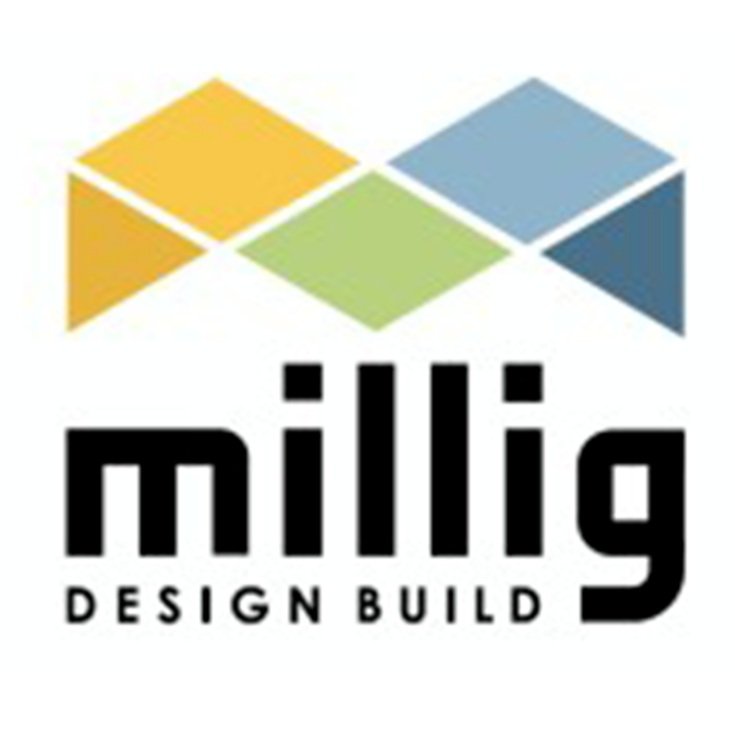Leading the Way in Decarbonization

Millig makes decarbonization work for you.
When you work with Millig Design Build, you get a comprehensive and actionable building decarbonization strategy and a team with the know-how to execute it in a way that meets your objectives without disrupting the work your building has to do.
Millig Design Build has developed comprehensive decarbonization master plans for over 16 million square feet of complex facilities and campuses across North America.
We specialize in providing cost-effective, practical, and achievable plans to transition to a sustainable-energy future for facilities including K-12, cities, counties, and industrial. Millig’s team has particular expertise in decarbonizing critical facilities, including:
University, College, and School District Campuses
Hospitals/Medical Facilities
Historical and Community Buildings
And More
Through our rigorous processes, Millig Design Build will deliver a tailor-made solution that is informed by our extensive experience as a builder and general contractor.
Understanding Decarbonization
-

What is Decarbonization?
Decarbonization is the process of reducing carbon dioxide (CO2) emissions by transitioning to cleaner energy sources, improving facility efficiency, and adopting sustainable practices.
-

Why is Decarbonization important?
By reducing emissions, air quality is improved while increasing facility performance, as well as lowering energy usage, overall consumer costs, and minimizing waste.
-

When should I start the process?
Decarbonization should be started immediately to maximize environmental and economic benefits while staying ahead of tightening regulations and market demands.
How We Approach Building Decarbonization
A successful decarbonization strategy is structured around interdependent steps that start with energy load reduction.
-
Retrofitting facilities to be more energy efficient lowers operating costs and greatly reduces the cost burden to implement the decarbonization steps needed to eliminate greenhouse gas emissions, such as electrification and renewable energy systems.
When implementing load reduction strategies, the Millig Design Build team strategically develops load reduction measures in concert with the owner’s future plans for the facilities and each of the other decarbonization steps discussed here.
-
Energy efficiency improvements reduce operating costs and carbon emissions, but these improvements alone cannot move you to a Net Zero carbon future.
To achieve deep decarbonization, the Millig Design Build team will help you transition from fossil fuel-fired, combustion-based heating systems to electrified sources of heat, particularly through the use of heat pumps.
-
Electrifying heating sources prepares a facility to be fully energized in the future by utility power that comes from clean, renewable energy sources such as wind and solar. Currently, utilities provide electricity from a mix of hydroelectric, nuclear, renewable, and fossil fuel sources, but electrifying today, in most areas of the county, significantly reduces current carbon emissions and is the only path to fully eliminating emissions in the future.
This is because utilities across the country are reducing carbon emissions in line with 2030 and 2040 targets, and the ultimate goal of many utilities is to fully eliminate emissions by 2050. As utility emissions get greener over time, fully electrified buildings will naturally reduce or eliminate carbon emissions.
This process can be aided and controlled by building owners by installing onsite renewable systems, like solar photovoltaics and geothermal heating, on facilities.
-
Employing a combination of energy efficiency, electrification, and renewable energy to eliminate 100 percent of carbon emissions may not always be achievable, especially for users who need high grade heat like high temperature steam. For all remaining applications requiring fossil fuels, including gas used in cogeneration, the Millig Design Build team can help you supplement with clean fuels, like biogas or hydrogen.
-
Non-combustion emissions commonly come from refrigerants and other working fluids in heat pumps, air conditioners, and chillers.
The Millig Design Build team will help you replace these powerful contributors to greenhouse gasses through careful consideration of the refrigerant type.Typically, low global warming potential (GWP) refrigerants require cooling equipment which is physically larger for the same load as compared to existing equipment. As a Design Build contractor, Millig can help you select the most appropriate equipment selections and manage the general contracting requirements associated with accommodating larger machines.
Project Highlight
Washington State
Department of Enterprise Services, Capitol Campus
Washington is leading the nation in state-led initiatives to accelerate decarbonization and the transition to a sustainable energy-based economy. In August 2023, Washington’s Department of Enterprise Services (DES) conducted a world-wide search for an engineering partner to lead the State through this transition at its flagship Capitol Campus in Olympia.
DES selected Millig Design Build thanks to our unique approach to campus decarbonization planning which includes creating a detailed Digital Clone of the campus. Our Digital Clone is a comprehensive, interactive virtual simulation that enables the team to perform rigorous analysis of the operation of individual buildings, as well as performing district energy balancing across 20 buildings and 3 million square feet for central system optimization. This approach will support a phased approach, where the greatest impact measures will be identified today and the Digital Clone will be used for ongoing, dynamic analysis of future phases of work.
Our comprehensive Decarbonization Plan Report will be completed in the summer of 2025. The Capitol Campus intends to implement the full plan, estimated to cost approximately $150 million, over the next three budget cycles from 2025 through 2031.
Why Decarbonize with Millig Design Build?
We utilize advanced facility energy modeling to create a three-dimensional computer simulation of your facility’s hourly energy use. This model incorporates actual construction, process equipment, system types, and operational characteristics and is closely calibrated to your facility’s actual utility data to validate accuracy.
We provide an actionable roadmap for the implementation of building decarbonization strategies. This approach goes far beyond the level of analysis typically provided by consulting firms in ‘energy audits.’
We identify practical solutions that are vetted for constructability and we can immediately design and construct our recommendations in a turnkey fashion.
In addition to carbon emissions reduction, we consider the invasiveness of each measure and work to minimize the effect each measure has on the job your facility has to do.

Contact us.
Start Your Decarbonization Journey with Millig Design Build Today.



